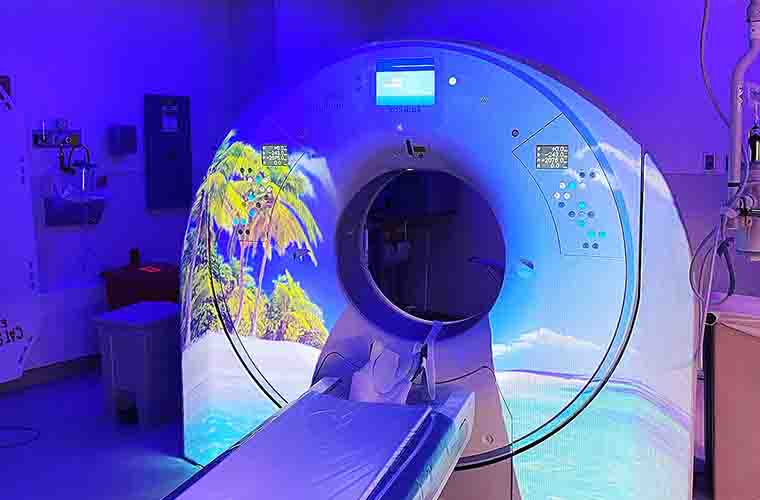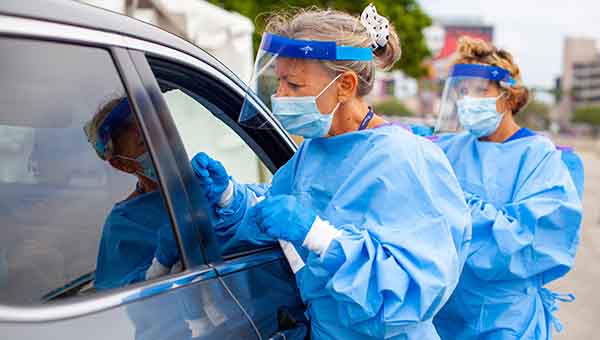Mease Countryside Enhances CT Experience for Pediatric Patients

Three-year-old Hope needed a CT scan. It would not be her first time to undergo the test, and her previous experience had been traumatic, according to her mother. So much so that she didn’t want to go back to a hospital.
Hope’s reaction is not uncommon. Medical equipment can be intimidating and perceived as scary for some children. Older children can better understand what’s going on and be prepared for what to expect, which can decrease their anxiety. It can be more complicated for younger children.
“Younger children and some children with special needs can have a harder time coping due to fear and their cognitive inability to understand what’s happening,’’ said Leslie Dempsey, a Child Life Specialist at Mease Countryside Hospital.
Patients are required to lie down and be still in order to obtain a quality radiology image, another challenge with some children.
“They are in a vulnerable position that inhibits their ability to feel in control,’’ Dempsey said. “This activates their fight/flight response and makes it difficult for them to hold still.’’
If clinicians can’t obtain a clear image while the child is awake and being supported by a Child Life Specialist, the next step is sedating the child through an IV.
That is what happened to Hope in her previous experience. Perceived trauma or fear can have long-term effects, but this time around, her CT scan experience would be different.
With the help of a grant from the Morton Plant Mease Health Care Foundation, Mease Countryside has been able to create an environment that enhances the CT experience for pediatric patients.
The hospital purchased ambient lighting, an image projector and skylight decorations for the ceiling. A company called Dream Think Imagine spent two days at the hospital to complete the installation and educate the staff on how to work the system.
Now when a child comes into the CT scan room, the first thing he or she does is choose an image from an iPad installed on the wall, and it pops up on the CT scanner. Patients also can choose what color they want the room lighting to be.
Hope and her mom picked out a pink flower scene. When the image appeared on the CT scanner, Hope pointed excitedly toward it and said, “Can I go in there?’’
Whitney Mol, also a Child Life Specialist at Mease Countryside, had been supporting Hope and her mom and witnessed the transformation.
“Not only did Hope calm down, her mother visibly relaxed and the worry fell off her shoulders,’’ Mol said.
There are dozens, if not hundreds, of scenes to choose from on the iPad. The set-up is so inviting that adolescents and adults are using it too.
“Animated scenes, like the flowers, a castle and doughnuts, are popular with the younger children,’’ Mol said. “Abstract art and sport scenes are popular with the adolescents, and adults tend to like the nature scenes.‘’
Other BayCare hospitals have similar systems for their pediatric patients. St. Joseph’s Children’s Hospital offers movie goggles for pediatric MRI patients and its pediatric emergency department has a sensory room equipped with a bubble column, fiber optics and a projector. St. Joseph’s Hospital-North has skylight images in its CT room.
“Something as simple as changing the environment can make a huge difference in how children cope and perceive the experience,’’ Dempsey said.
Just ask Hope’s mom.


